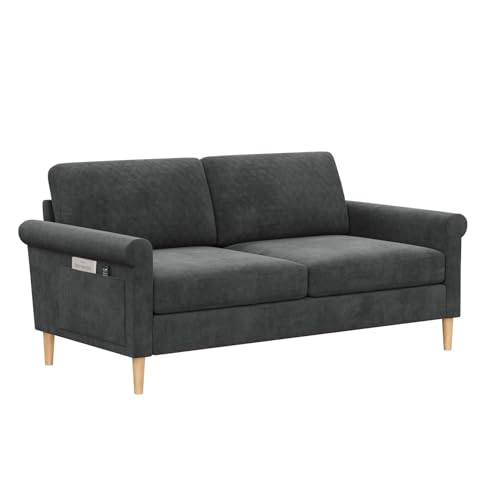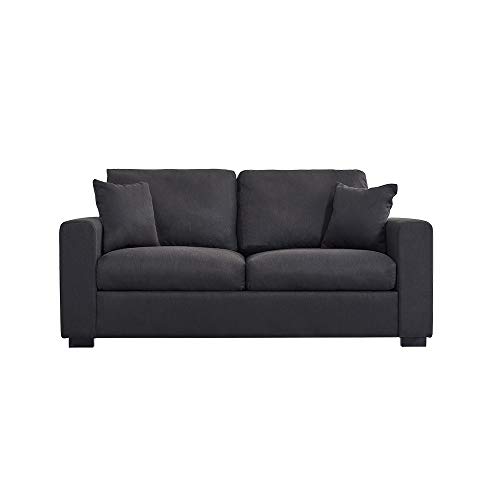Guide To 2 Seater Leather And Fabric Sofa: The Intermediate Guide For …
페이지 정보

본문
 If you're looking for a new sofa, it isn't easy to decide between leather or fabric. This is especially relevant if you're new to furniture experience.
If you're looking for a new sofa, it isn't easy to decide between leather or fabric. This is especially relevant if you're new to furniture experience. If you have kids or live in a small apartment the leather option might be best for you. It's easy to wipe down and is stylish in all homes.
If you have kids or live in a small apartment the leather option might be best for you. It's easy to wipe down and is stylish in all homes.Comfort
The sofa is usually the focal point in many people's homes and is a significant purchase. You want one that is comfortable to sit for hours, looks great, fits with your room style and will endure the test of time. Deciding between leather or fabric isn't easy, but it is important to assess your priorities as well as your lifestyle and budget prior to making a decision.
Leather is a high-end material that has a luxurious feel and oozes elegance in a home. It is durable and stain-resistant, it is safe for pets and children, and will last for a long period of time with proper care. It can be costly up front and may need regular conditioning to prevent cracks or peeling.
Fabric sofas come in a wide range of styles, colours and fabrics. They are an affordable alternative to a leather one. They are also more comfortable and more welcoming and can feel "broken in" right from the beginning. They are more prone to dust mites and hairs from pets and require more frequent cleaning. There are now hypoallergenic fabrics as well as new technologies available.
Fabric sofas can last for up to 15 years if maintained properly. Regular vacuuming and deep cleaning will keep the Fabric 2 Seater Sofas free of odours, stains and dirt. They also can shrink and flatten as time passes, just like leather. Many fabric couches are treated with chemicals to make them stain resistant and flame retardant. These chemicals can release volatile organic compounds that may affect indoor air quality and cause allergies.
Durability
When purchasing sofas, we typically opt for fabrics that are extremely durable, as this is essential for those with pets and children. You don't want to pay much upfront and then end up feeling remorseful about buying after the first spill or claws that are crowbarred. Also you don't want to purchase something that is cheap but can't withstand regular use.
Leather is also extremely resilient with a tremendous tear strength. It can last up to four times longer than fabric and is naturally resistant to cracking, fading and flaking over time. It is also able to be conditioned to restore its natural oils and look as fresh as new.
Fabrics are a more affordable option and come in a range of different colors patterns, patterns, and textures to suit any interior design. They are also easier to clean than leather and can withstand a significant amount of wear and tear, however they tend to be more susceptible to moisture and fade in time.
Microfiber is a great choice for its durability and comes in a variety of colors, however it's not as tough as genuine leather and might not be able to take the punishment of scratches. It is still a great choice for families because of its resistance to spills and stains. It's also simple to clean with the help of a damp cloth.
Suede is more difficult to clean and repair than leather. It can also lose its shape if not conditioned and can feel quite rough to the touch. It is also a very thin material and therefore may not be as tough as sheepskin or cowhide.
Allergens
Fabrics can have a major impact on allergies. It is important to understand what the different options do. Fabrics tend to retain allergens such as dust mites, pet dander and mold that can cause symptoms of allergies like rhinitis, hay fever, asthma and eczema. These fabrics are ideal for their health.
Leather, on the other hand isn't susceptible to the accumulation of allergens and can offer consistent comfort no matter what season it is. However, it can be a trigger for dermatitis, especially for those suffering from contact dermatitis and who are sensitive to the chemicals that are used in the tanning process. To minimize the risk of skin reactions, it's essential to use products that are vegetable-tanned and to maintain a regular skincare routine.
Both sofas made of fabric and leather are sturdy, but the material you select will have a major impact on how your couch can stand up to wear. A good quality fabric will stand up to daily use without fading or sagging and can resist spills and body oils easily. Modern sofas come with stain-resistant treatments that make cleaning effortless.
While you might not be able to stop an allergic reaction from the leather in your sofa, it can help to reduce allergens by keeping a lint roller near and regularly cleaning your living space. This will help reduce the amount of dust, pet hair, and dust mites you find on your sofa. If you're still suffering from allergies, consider replacing your sofa for a more hypoallergenic version. For example, a sofa made of synthetic leather or vinyl is less likely to keep dust or pet dander out of the mites. It can also allow you to breathe easier.
Scratches
It is important to think about how much wear and tear you can expect the leather sofa to endure. The finish, color and quality of the leather are all important elements in determining how long a couch will last. It is also important to ensure that the couch is sturdy enough to stand up to spills and other accidents. This can be achieved by choosing a couch that has a hardwood frame and high density foam cushions.
Leather is susceptible to being scratched due to various reasons, including stretching, marking territory or the reliving of the stress. Scratches can be of various severity. They vary from minor surface scratches to deep punctures or cuts. Minor scratches can be fixed by using a leather conditioner. This can help restore the balance of moisture and oil in the leather, preventing it from drying out and cracking. Deep scratches and cut might require a different treatment based on the severity of damage.
If you have pets, it's an ideal idea to trim their nails regularly, as this will aid in preventing them from scratching your couch. You can also retrain the scratching behavior by providing them with alternative scratching surfaces, such as sisal rope or cardboard. Another option is to use a pet-safe furniture polish, which can be applied with an abrasive cloth to the damaged area.
It is important to wash your leather couch frequently and keep it out of direct sunlight and heat, because they dry it out. This could cause cracks in the leather. Repairing this is often difficult and requires the reupholstery. Use a conditioner for leather and fabric 2 seater sofa to keep the leather soft.
Smell
Leather couches tend to smell a little different than fabric. It's because leather is porous and will absorb odors like smoke, body odors, or food. The good news is that odors usually disappear over time, particularly when you employ a non-toxic, fragrance free cleaner.
If the smell is strong, it could mean that something is wrong with the foam. This is usually caused by the chemical off-gassing that occurs in polyurethane, which is a petroleum-based derivative. If you're concerned about this, look for couches made with CertiPUR-US certified latex foams or natural latex.
Another method to determine faux leather is to look for texture or bumps on the back of the sofa. This indicates that the leather is not authentic top grain. You can also perform an examination by laying the sofa to one side and looking for any exposed upholstery backing. If you smell it, it's probably a synthetic substance like polyurethane or polyester. These materials will have a distinct scent than leather.
Cleaning your leather sofa regularly will help to keep it in good condition and smell great. This will keep it looking great and smelling good and also prevent it from becoming stiff or brittle over time. Start by vacuuming and dusting your couch before wiping it down with a dry cloth and baking soda (a good natural way to remove odors). You should do this at least every two seater fabric sofa weeks or more to rid your sofa of dust and dirt accumulation. Apply leather conditioner to preserve the color and texture of your sofa.
- 이전글The Main Problem With Treehouse Beds, And How To Fix It 24.11.14
- 다음글10 Reasons Why People Hate Fireplace On Wall 24.11.14
댓글목록
등록된 댓글이 없습니다.


